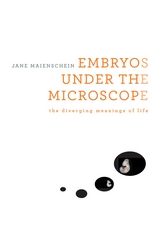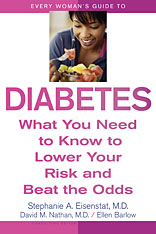4 start with E start with E

Throughout the Middle Ages, enormously popular bestiaries presented people with descriptions of rare and unusual animals, typically paired with a moral or religious lesson. The real and the imaginary blended seamlessly in these books—at the time, the existence of a rhinoceros was as credible as a unicorn or dragon. Although audiences now scoff at the impossibility of mythological beasts, there remains an extraordinary willingness to suspend skepticism and believe wild stories about nature, particularly about insects and their relatives in the Phylum Arthropoda.
In The Earwig’s Tail, entomologist May Berenbaum and illustrator Jay Hosler draw on the powerful cultural symbols of these antiquated books to create a beautiful and witty bestiary of the insect world. Berenbaum’s compendium of tales is an alphabetical tour of modern myths that humorously illuminates aerodynamically unsound bees, ear-boring earwigs, and libido-enhancing Spanish flies. She tracks down the germ of scientific truth that inspires each insect urban legend and shares some wild biological lessons, which, because of the amazing nature of the insect world, can be more fantastic than even the mythic misperceptions.

Too tiny to see with the naked eye, the human embryo was just a hypothesis until the microscope made observation of embryonic development possible. This changed forever our view of the minuscule cluster of cells that looms large in questions about the meaning of life. Embryos under the Microscope examines how our scientific understanding of the embryo has evolved from the earliest speculations of natural philosophers to today’s biological engineering, with its many prospects for life-enhancing therapies. Jane Maienschein shows that research on embryos has always revealed possibilities that appear promising to some but deeply frightening to others, and she makes a persuasive case that public understanding must be informed by up-to-date scientific findings.
Direct observation of embryos greatly expanded knowledge but also led to disagreements over what investigators were seeing. Biologists confirmed that embryos are living organisms undergoing rapid change and are not in any sense functioning persons. They do not feel pain or have any capacity to think until very late stages of fetal development. New information about DNA led to discoveries about embryonic regulation of genetic inheritance, as well as evolutionary relationships among species. Scientists have learned how to manipulate embryos in the lab, taking them apart, reconstructing them, and even synthesizing—practically from scratch—cells, body parts, and maybe someday entire embryos. Showing how we have learned what we now know about the biology of embryos, Maienschein changes our view of what it means to be alive.

"Fritzsch could not give the modern reader a more memorable introduction to the personalities and science of Isaac Newton and Albert Einstein unless somehow he could find the keys to H. G. Wells' time machine. . . . Many readers will applaud Fritzsch for this lively but profoundly insightful book." —Booklist, starred review
"[Fritzsch] has dreamed up a dialogue between the two great physicists, helped along by a fictional modern physicist. . . . The conversation builds up to an explanation of E=mc2, and on the way illuminates the important points where Newtonian and Einsteinian theory diverge." —David Lindley, New York Times Book Review

Women have long needed a book devoted to their unique issues with diabetes. This up-to-date and practical guide advocates simple lifestyle changes that can help women reduce their risk of getting diabetes or, if already diagnosed, prevent the disease’s most serious complications. Every Woman’s Guide to Diabetes translates the latest findings from diabetes research into proven strategies busy women can use to stay healthy and gain control over an often overwhelming disease. The authors discuss the nature of diabetes, helping readers through the complex medical decisions involved in diabetes treatment. They highlight strategies to decrease the emotional stress and social isolation that often accompany diagnosis, and offer everyday techniques for managing blood sugar.
Key features include:
— Unique aspects of diabetes for women throughout the life cycle
— Timetable of recommended tests and check-ups
— Guide to medications with common dosages
— Charts to help organize diabetes-care tasks and supplies
— Time-management tips for better disease regulation
— Guide to contraceptives available to women with diabetes
— Review of issues critical to women before, during, and following pregnancy
— Advice for overcoming barriers to weight loss and exercise
— Plan for intelligent diet trade-offs while still enjoying meals
— Practical tips for planning exercise
— Strategies to avoid diabetes “burn-out”
Written by two physicians (one of whom is a woman living with diabetes) and an experienced medical writer, Every Woman’s Guide to Diabetes recognizes the power that women have in their households to effect lifestyle changes that will benefit themselves and loved ones, including their mothers, daughters, sisters, and partners. This power can reduce the toll of the diabetes epidemic.
READERS
Browse our collection.
PUBLISHERS
See BiblioVault's publisher services.
STUDENT SERVICES
Files for college accessibility offices.
UChicago Accessibility Resources
home | accessibility | search | about | contact us
BiblioVault ® 2001 - 2024
The University of Chicago Press









